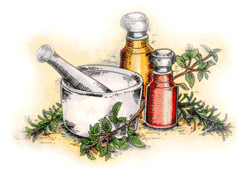 Abdominal Injury Abdominal Injury |
 Achilles Tendon Achilles Tendon |
 Ankle Bone Injury Ankle Bone Injury |
 Ankle Strain Ankle Strain |
 Ankle Synovitis Ankle Synovitis |
 Arm And Shoulder Tenosynovitis Arm And Shoulder Tenosynovitis |
 Arm Contusion, Forearm Arm Contusion, Forearm |
 Arm Contusion, Radial Nerve Arm Contusion, Radial Nerve |
 Arm Contusion, Upper Arm Injury Arm Contusion, Upper Arm Injury |
 Arm Exostosis Arm Exostosis |
 Arm Fracture, Forearm Arm Fracture, Forearm |
 Arm Fracture, Humerus Arm Fracture, Humerus |
 Arm Strain, Biceps Injury Arm Strain, Biceps Injury |
 Arm Strain, Forearm Arm Strain, Forearm |
 Arm Strain, Triceps Arm Strain, Triceps |
 Arm Strain, Upper Arm Arm Strain, Upper Arm |
 Back, Ruptured Disk Injury Back, Ruptured Disk Injury |
 Back Sprain, Lumbo Dorsal Region Injury Back Sprain, Lumbo Dorsal Region Injury |
 Back Sprain, Sacroiliac Region Injury Back Sprain, Sacroiliac Region Injury |
 Back Strain, Dorsal or Thoracic Spine Region Back Strain, Dorsal or Thoracic Spine Region |
 Back Strain, Lumbar Spine Region Back Strain, Lumbar Spine Region |
 Bee Sting Bee Sting |
 Bladder or Urethra Injury Bladder or Urethra Injury |
 Breast Contusion Breast Contusion |
 Breastbone Sprain Breastbone Sprain |
 Burns Burns |
 Buttock Contusion Buttock Contusion |
 Chest Muscle Strain Chest Muscle Strain |
 Collarbone Area Strain, Deltoid Muscle Collarbone Area Strain, Deltoid Muscle |
 Collarbone (Clavicle) Contusion Collarbone (Clavicle) Contusion |
 Collarbone Dislocation - Shoulder Joint Collarbone Dislocation - Shoulder Joint |
 Collarbone Fracture, Outer End Collarbone Fracture, Outer End |
 Collarbone Fracture, Shaft Midportion Collarbone Fracture, Shaft Midportion |
 Corneal Abrasion Corneal Abrasion |
 Dog Bites Dog Bites |
 Ear Injury Ear Injury |
 Elbow Bursitis, Radio-Humeral Elbow Bursitis, Radio-Humeral |
 Elbow Contusion, Ulnar Nerve Elbow Contusion, Ulnar Nerve |
 Elbow Contusion Elbow Contusion |
 Elbow Dislocation Elbow Dislocation |
 Elbow Fracture, Coronoid Process Elbow Fracture, Coronoid Process |
 Elbow Fracture, Epicondyle Elbow Fracture, Epicondyle |
 Elbow Fracture, Lower Humerus Elbow Fracture, Lower Humerus |
 Elbow Fracture, Radius Elbow Fracture, Radius |
 Elbow Fracture, Ulna Elbow Fracture, Ulna |
 Elbow Sprain Elbow Sprain |
 Elbow Strain Elbow Strain |
 Elbow Tendinitis or Epicondylitis Elbow Tendinitis or Epicondylitis |
 Eye Injury Eye Injury |
 Face Contusion Face Contusion |
 Snakebite Snakebite |
 Spider Bites Spider Bites |
 Tick Bites Tick Bites |
|
|
Home :: Collarbone Fracture, Outer End
Collarbone Fracture, Outer End
A complete or incomplete break in the outer third of the clavicle (collarbone). Frequently, this fracture extends into the shoulder joint and is associated with rupture of the shoulder ligaments.
BODY PARTS INVOLVED
- Clavicle (collarbone).
- Shoulder joint.
- Joint between the shoulder and collarbone.
- Soft tissue surrounding the fracture site, including nerves, tendons, ligaments, blood vessels and bone attached to ligaments.
Causes
Direct blow or indirect stress to the bone. Indirect stress may be caused by twisting or a violent muscle contraction. Other causes may include:
- a tumor in the collarbone
- conditions that cause weak bones, such as osteoporosis
- physical abuse , including child abuse or elder abuse
Signs & Symptoms
- Severe pain at the fracture site.
- Swelling around the fracture.
- Visible deformity if the fracture is complete and bone fragments separate enough to distort normal contours.
- Tenderness to the touch.
- Numbness or coldness in the shoulder and arm on the affected side, if the blood supply is impaired.
- Bruising or abrasions along your collarbone, or at the top or side of your shoulder
Treatment
Follow your doctor's instructions. These instructions are supplemental.
- Immobilizatlon will be necessary. For this fracture,a sling usually works quite well.
- Use frequent ice massage. Fill a large styrofoam cup with water and freeze. Tear a small amount of foam from the top so ice protrudes. Massage firmly over the injured area in a circle about the size of a baseball. Do this for 15 minutes at a time, 3 or 4 times a day, and before workouts or competition.
- After 48 hours, localized heat promotes healing by increasing blood circulation in the injured area. Use a heating pad, hot soaks, hot showers, heating pads, or heat liniments and ointments.
If your fractured collarbone cannot be treated with closed reduction, your doctor will do surgery to repair it with a surgical pin or plate.
Home Diet
- Drink only water before manipulation or surgery to treat the fracture. Solid food in your stomach makes vomiting while under anesthesia more hazardous.
- During recovery, eat a well-balanced diet that includes extra protein, such as meat, fish, poultry, cheese, milk and eggs. Increase fiber and fluid intake to prevent constipation that may result from decreased activity.
Prevention
- Build adequate muscle strength and achieve good conditioning prior to exercise, athletic practice or competition. Increased muscle mass helps protect bones and underlying tissue.
- Use protective equipment such as shoulder pads, when appropriate.
back to injuries section
|
|


